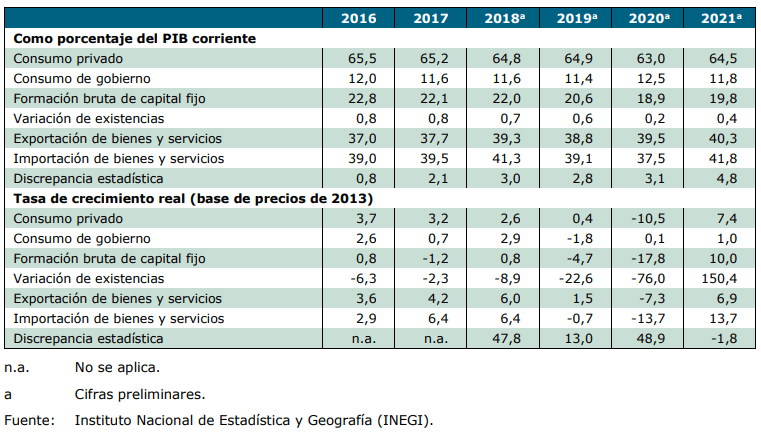The National Institute of Statistics and Geography (INEGI) released this Thursday the timely indicator of private consumption for December 2022 and January 2023.
For December 2022 and at annual rate, the Timely Indicator of Private Consumption (IOCP) anticipates an increase in the Monthly Indicator of Private Consumption in the Domestic Market (IMCPMI) of 3.2 percent.

For January 2023, the IOCP estimates an annual change in the IMCPMI of 2.9 percent.
The IOCP provides information for the two subsequent months with respect to the latest available IMCPMI data, thus gaining a window of opportunity of up to seven weeks.
The publication consists of a point estimate of the annual change, monthly change and index levels (base 2013=100) in seasonally adjusted figures, along with their confidence intervals at 95 percent. This estimate is not intended to replace the official calculation.
According to information from the World Trade Organization (WTO), during the period between 2016 and 2018, Mexican economic growth continued to be supported mainly by domestic demand, especially private consumption, as the evolution of gross capital formation was weak, and public spending remained tightly controlled.
Private consumption
The sharp slowdown in economic growth experienced from mid-2018 onwards, which led to a slight contraction in real GDP in 2019, was partly due to weak domestic demand, particularly the sharp fall in gross capital formation, a contraction in public spending and a slowdown in private consumption, only partially alleviated by a positive contribution from net exports.
Estructura del PIB por concepto de gasto, 2016-2021
During 2020, the Mexican economy contracted by 8.2%, as a result of the negative effects of the Covid-19 pandemic on production, consumption and employment.
The pandemic had a strongly negative effect on domestic demand, particularly on gross capital formation and private consumption, as government spending expanded modestly in real terms.
Net exports made a positive contribution to GDP, as imports fell at a faster rate than exports.
To note: the variables used are selected on the basis of their relationship with the IMCPMI based on economic theory and statistically according to the criteria of timeliness, contemporaneous correlation and Granger causality.

